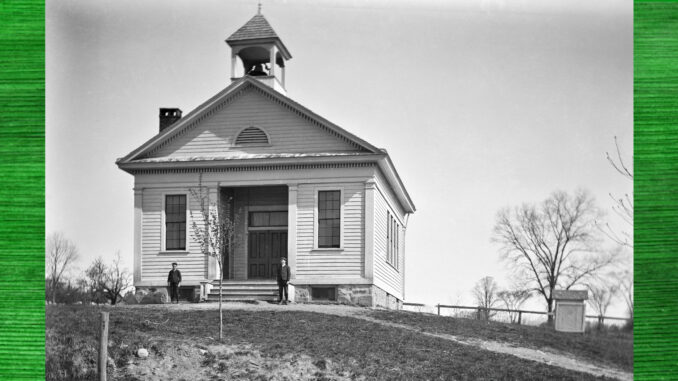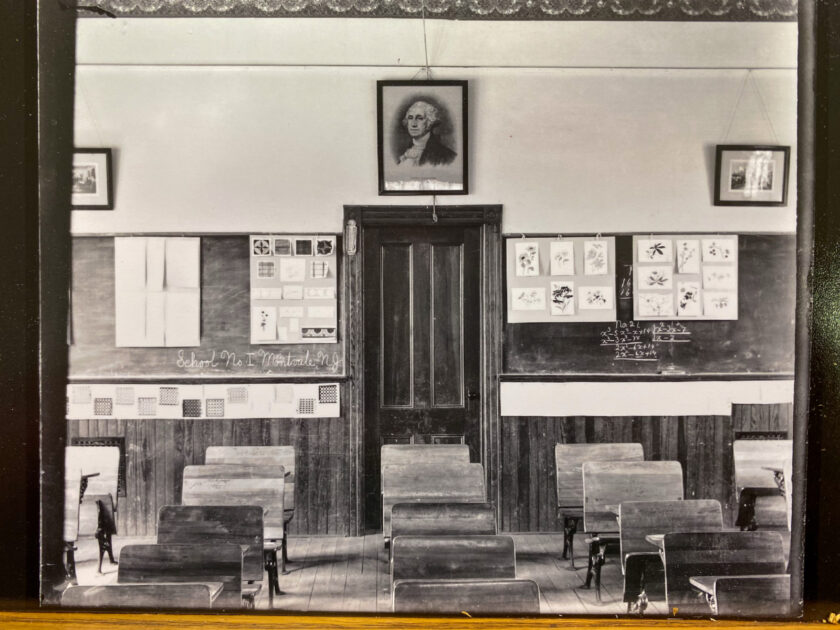
MONTVALE, N.J.—At the turn of the 20th century, Montvale ended up with two identical schoolhouses less than 2 miles apart. Here is how it happened.
Montvale had become a separate municipality in 1894, and at the same time a new school district was created. High school scholars were sent to Pearl River in September, and grade school students were sent to a rented house on Grand Avenue from September 1895 to June 1896. The following year the Board of Education rented rooms on the second floor of Ackerman’s grocery store next to the railroad depot, and these became makeshift classrooms. For the people of Upper Montvale, there was a very old and very small school on Chestnut Ridge Road opposite Summit Avenue.
Montvale needed a new school—on this much, everyone agreed. Then came the matter of where it should be built. That marked the beginning of a long and bitter controversy.
Much of the early settlement in the region had been in Upper Montvale. In fact, the intersection of Main Street (now Summit Avenue) and Spring Valley Road had at one time been the village center. Things changed with the coming of the railroad in 1871. The population was growing, and people were now building homes in eastern Montvale, where they had easy access to rail service. In the late 19th century, the center of action shifted to the area around the station at Grand Avenue and Kinderkamack Road. It seemed only logical that the new schoolhouse would be built in this part of town.
The people of Upper Montvale would have none of it. They wanted a new school in their section—a convenience even more important in those days before automobile travel. The schoolhouse on Chestnut Ridge Road was ancient and inadequate. If they did not get a school out of this deal, they would not vote to approve funding.

After a fight lasting three years, a compromise was reached—the people voted to spend $3,000 on the construction of two one-room schoolhouses, each with its own teacher, to instruct all students through grade eight.
James Van Riper offered land on the north side of Summit Avenue a little west of Spring Valley Road, in Upper Montvale. This would become the site of School No. 1. John Male gave a plot of ground at Grand Avenue and Waverly Place, just up the road from the railroad station. This would be the location of School No. 2. The buildings were constructed simultaneously during the spring and summer of 1899 and opened to students that September.
As more and more families moved to the borough, it took less than a decade for the people of eastern Montvale to outgrow School No. 2. By 1908, the Grand Avenue schoolhouse, which still consisted of just one room, had 60 students enrolled. The overcrowded school had to be replaced.
To make way for construction, the books and desks were cleared from School No. 2 and the building was put up for auction. Of the three bidders, Montvale Mayor Fred Linderman came in the highest, at $500. The schoolhouse was moved across the street and added to the north side of the mayor’s carriage salesroom, showcasing farm implements and machinery.
A larger school was built in 1909 at Grand and Waverly, this time constructed of brick and boasting two floors, each with two large rooms. In 1927, the school was enlarged to eight rooms and indoor plumbing was added. The building, which is still standing, would later serve as the borough’s library from 1975 to 2004. In 2018 it was renovated into affordable housing units for senior citizens.
Farther afield from the railroad, Upper Montvale had not seen the same sort of population growth. This section remained rural well into the 20th century, and the little Summit Avenue school maintained a student body of about 20 pupils.
The following updates from the Bergen County Standard paint a vibrant picture of school life:
- March 1909: All the pupils at School No. 1 passed their examinations “with flying colors.” The teacher, M.M. Crossett, got all the credit. It is her first year there and, although very strict, she gets excellent results and cooperation from the children.
- April 1909: The school at Upper Montvale has received a portion of its new library.
- May 1909: School No. 1 gave a program on Arbor Day with singing, recitation and the planting of 12 trees.
- December 1909: Upper Montvale School had a Christmas entertainment which was a great success. Instead of reindeer, Kris Kringle came with a goat belonging to Mr. Akers.
School No. 1 closed its doors in June of 1931. Twenty-one children, along with teacher Francina Allen and janitor Mr. Van Riper, were transferred to the eight-room school on Grand Avenue. Afterward, the Upper Montvale schoolhouse was used at various times by the Police Department and other town agencies during World War II. In the 1950s the vacant building met its end by fire during a fire department training exercise.
